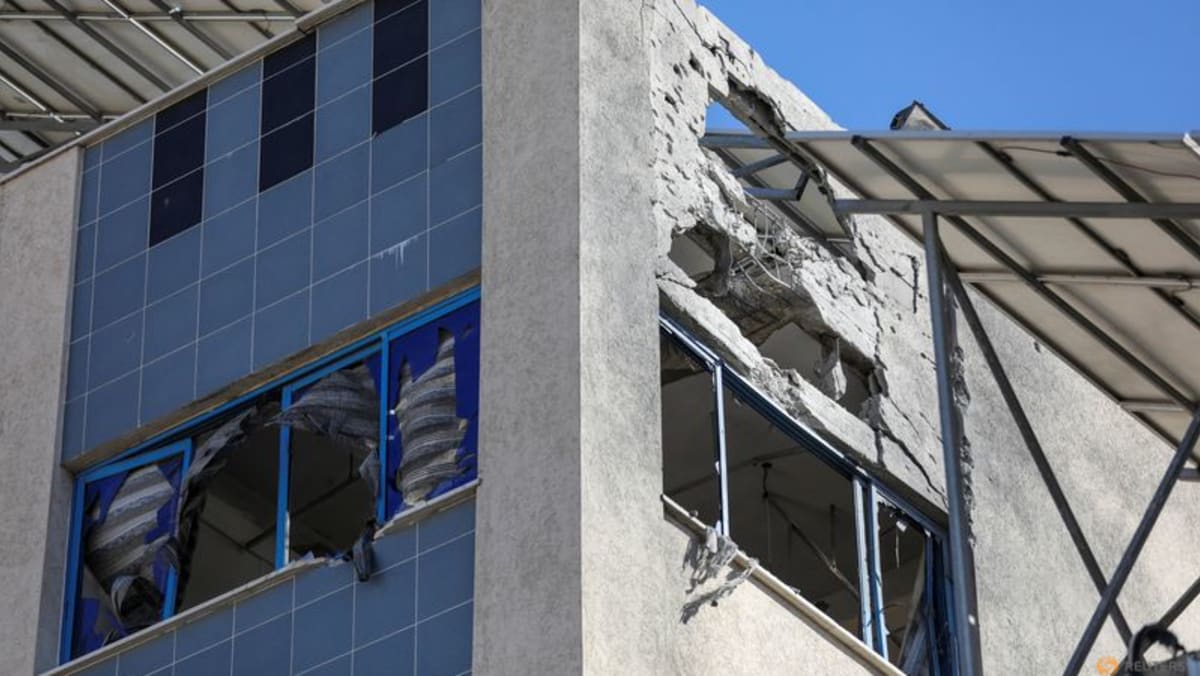Tropical Storm Mawar brings heavy rains, landslide risk to Japan’s southern islands as it passes by

A weakened Tropical Storm Mawar is bringing heavy rains to Japan’s main southern islands after passing the Okinawan archipelago early Friday
ByJOHNSON LAI and HIROYUKI KOMAE Associated Press
A person holds an umbrella against strong wind and rain as he walks on a street Friday, June 2, 2023, in Tokyo, as a tropical storm was approaching. (AP Photo/Eugene Hoshiko)
The Associated Press
NAHA, Japan — A weakened Tropical Storm Mawar brought heavy rains to Japan’s main southern islands Friday after passing the Okinawan archipelago and causing injuries to several people.
Residents in vulnerable areas were warned of the potential for flooding and mudslides, and dozens of local flights were canceled for the day. On Okinawa, strong winds continued to blow and eight people were injured. An older woman who fell had a serious head injury in Nishihara city, but the other injuries were slight.
Formerly a super typhoon, Mawar had winds blowing up to 90 kph (56 mph) as it moved east of Okinoerabujima over the Pacific Ocean, the Japan Meteorological Agency said.
While wind damage was limited, warm and damp air from the tropical storm was intensifying seasonal rains, threatening flooding and mudslides, the meteorological agency said.
Up to 35 centimeters (1.1 feet) of rain was forecast over the next 24 hours through Saturday morning. The agency issued flooding and mudslide warnings in parts of southwestern Japan, cautioning residents near rivers and hillside to use caution.
Mawar largely skirted Taiwan and the Philippines after tearing across Guam last week. It sent waves crashing into Taiwan’s east coast and brought heavy rains to the northern Philippines, though no major damage was reported.
Japan had deployed a number of PAC-3 land-to-air interceptors on southern islands for a North Korean rocket launch, but some of them were kept on base instead of being set up at intended locations due to safety precautions ahead of the typhoon. A launch Wednesday failed, but North Korea intends to try again.
The U.S. military, which has troops stationed at multiple facilities on Okinawa, was tracking the storm closely.
Mawar lashed Guam last week as the strongest typhoon to hit the U.S. Pacific territory in more than two decades. As of Wednesday, only 28% of power had been restored and about half the water system was operational, according to the Federal Emergency Management Agency.
There have been long lines for gas and officials estimate it will be four to six weeks before power is fully restored. FEMA did not yet know exactly how many homes were destroyed.
___
AP journalist Mari Yamaguchi in Tokyo contributed to this report.
Source: abc news















